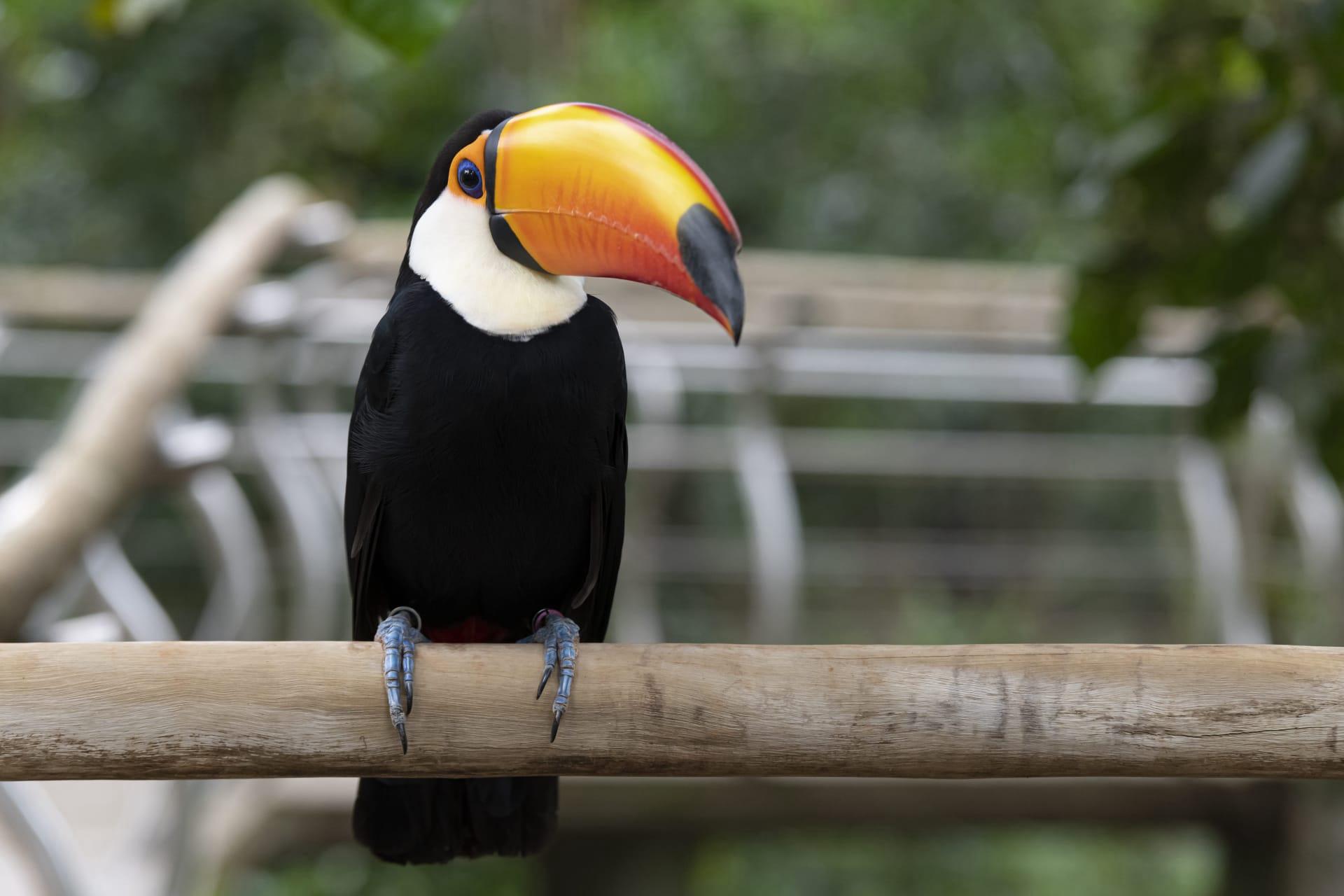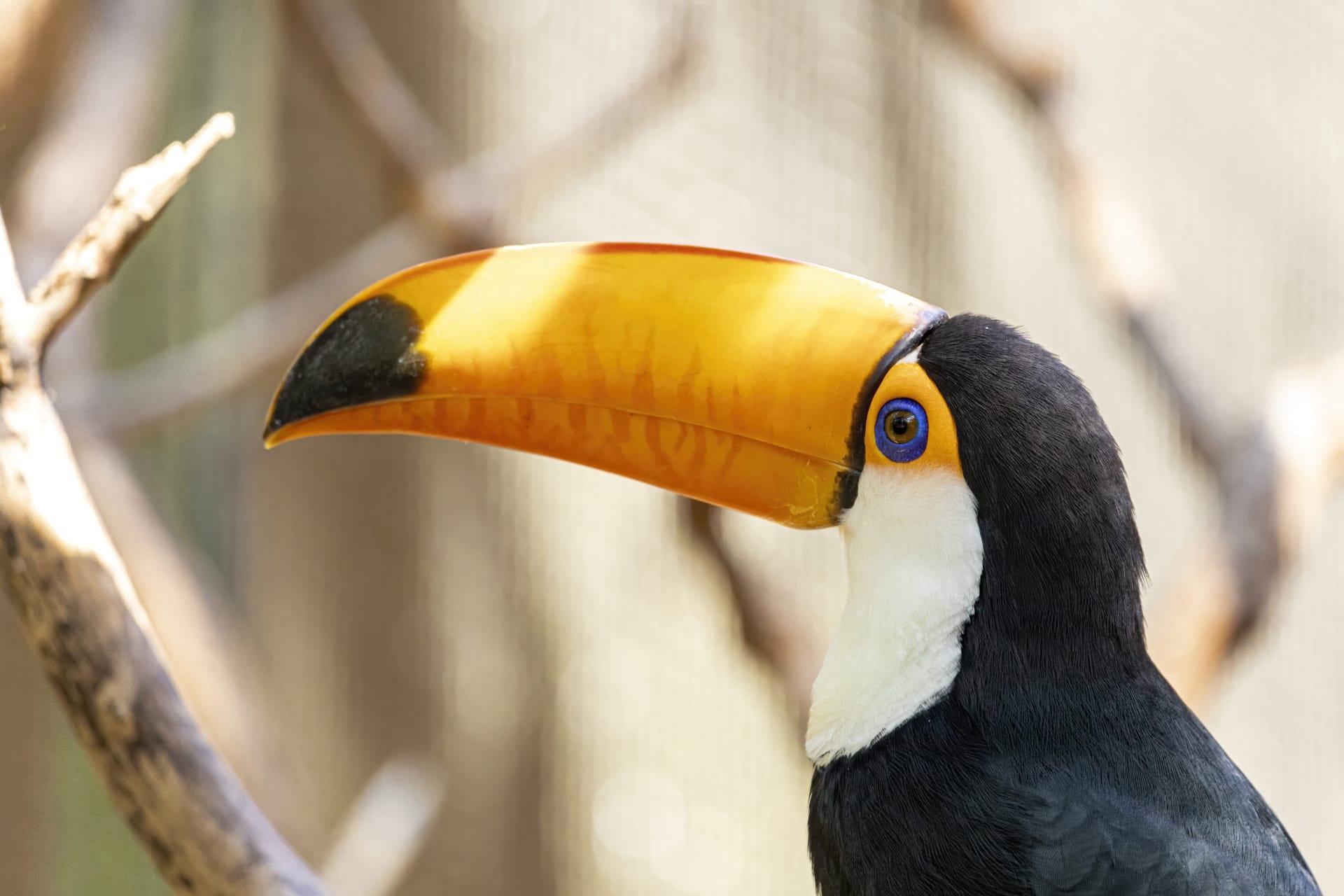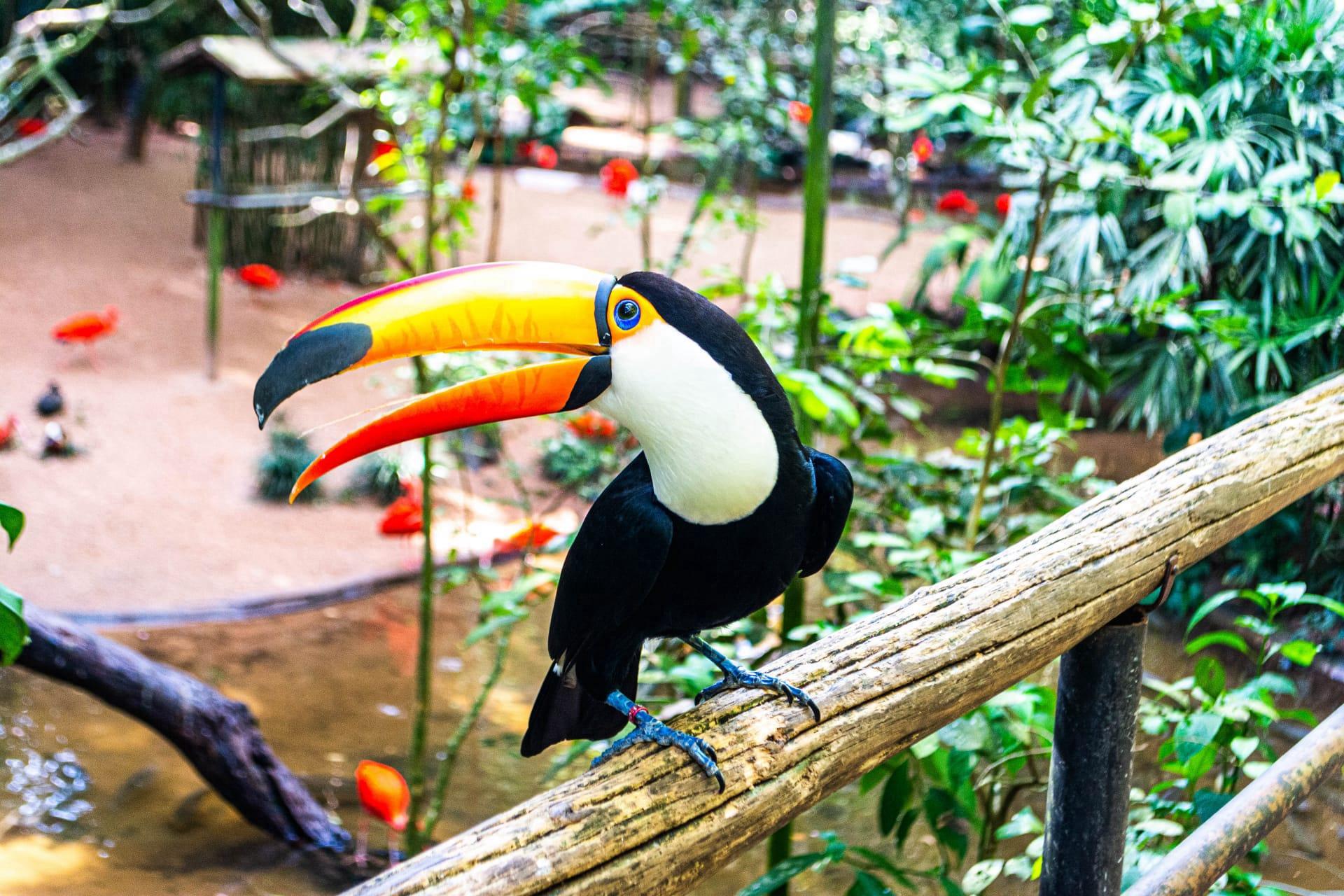Toucan Characteristics
- Home /
- Mini Encyclopedia /
- Animal /
- Toucan Characteristics
1
Toucans, renowned for their vibrant, oversized bills, are a marvel of nature. These birds, often found in Central and South America's tropical forests, display a range of sizes. Generally, toucans measure between 20 to 25 inches in length. Their hallmark feature, the large bill, can reach up to 7.5 inches, nearly a third of their body size. Despite its size, the bill is surprisingly lightweight, thanks to its internal structure composed of bone struts filled with spongy tissue. These remarkable birds have a lifespan that can extend up to 20 years in the wild, though this can be longer in captivity. Their colorful plumage, predominantly black with splashes of red, white, yellow, or blue, adds to their distinctive appearance.
The toucan's bill is not just a visual spectacle; it serves several practical functions. Its large surface area helps in thermoregulation, allowing toucans to adjust their body temperature. The bill is a highly effective tool for feeding. Toucans primarily feast on fruits, but they are opportunistic eaters and may also consume insects, small birds, and eggs. The bill's serrated edges help in gripping and peeling fruit, while its length is advantageous in reaching distant or awkwardly positioned food sources. Additionally, the bill plays a crucial role in social interactions and mating rituals. Toucans use their bills to attract mates through a display of bill fencing and tapping, a unique aspect of their behavior.

2
Question: Why do toucans have such large bills?
Answer: The large bill of a toucan, often mistaken as a cumbersome appendage, is actually a multi-functional tool crucial for their survival. Primarily, it's a thermoregulatory device. The bill's extensive network of blood vessels helps in dissipating heat, allowing the toucan to regulate its body temperature in the hot, humid climate of the rainforest. This feature is essential for their survival in varying temperatures. Secondly, the bill is vital for their feeding habits. It enables toucans to reach and procure food that would otherwise be inaccessible. The length and dexterity of the bill allow them to forage fruits from branches that cannot bear their weight, and its serrated edge aids in gripping and processing food. Furthermore, the bill is a key element in their social and mating behaviors, used in rituals to attract mates and establish dominance within groups.

3
Toucans are not renowned for their flying abilities. They possess short, wide wings suitable for brief, direct flights within the forest canopy. These birds are more adept at hopping and moving among branches, using their strong legs and clawed feet. Their flight is characterized by rapid wing beats followed by gliding, primarily used for moving between trees or forest gaps. The toucan's agility in the trees is remarkable, as they maneuver through dense foliage with ease, a skill crucial for survival in their arboreal habitat.
In terms of feeding, toucans exhibit unique traits. Their diet is predominantly frugivorous, relying heavily on a variety of tropical fruits. However, they are opportunistic feeders and will consume insects, small birds, and eggs when available. Their foraging technique involves using their long bill to skewer fruits, which are then tossed back into the throat with a jerk of the head. This method is efficient in handling both large and small fruits. Additionally, their feeding habits play a crucial role in their ecosystem as seed dispersers, aiding in the propagation of various plant species within their habitat.

4
Toucans inhabit a range of environments within tropical and subtropical regions, primarily in the rainforests of Central and South America. These environments are characterized by high humidity, dense vegetation, and a rich biodiversity. Toucans prefer higher elevations in the forest canopy, where they reside in tree holes. These natural cavities provide shelter and are crucial for their nesting sites. Adapted to a life among the trees, toucans thrive in these lush, fruit-abundant environments, contributing to the ecological balance by dispersing seeds and controlling insect populations.
Reproductively, toucans are monogamous, typically forming pairs. Nesting occurs in tree cavities, which they often take over from other birds rather than excavating themselves. The female lays between 2 to 4 eggs, which are incubated by both parents. Eggs hatch after about 16 to 20 days. Both parents are involved in rearing the young, feeding them regurgitated fruit and small animals. The young toucans remain in the nest for about 6 to 8 weeks, during which they develop their large bills and plumage. Once fledged, they continue to receive care from their parents for several weeks before becoming independent.

5
Book: "Toucans: Masters of the Rainforest" by Emma H. Johnson, published in the USA in 2010. This book offers a comprehensive look into the world of toucans, detailing their behavior, habitat, and physiology. Johnson, a renowned ornithologist, blends scientific research with engaging narrative, making it accessible to both enthusiasts and experts. The book features vivid photographs and illustrations, showcasing the diversity and beauty of toucan species across the Americas.
Book: "The Secret Life of Toucans" by Carlos Mendez, published in Brazil in 2015. Mendez, a Brazilian wildlife photographer and conservationist, provides an intimate portrayal of toucans in their natural habitat. The book is a culmination of his decade-long study and observation of these birds. It explores their social structure, feeding habits, and the challenges they face due to habitat loss. The book is richly illustrated with Mendez's photographs, capturing the essence of these charismatic birds.